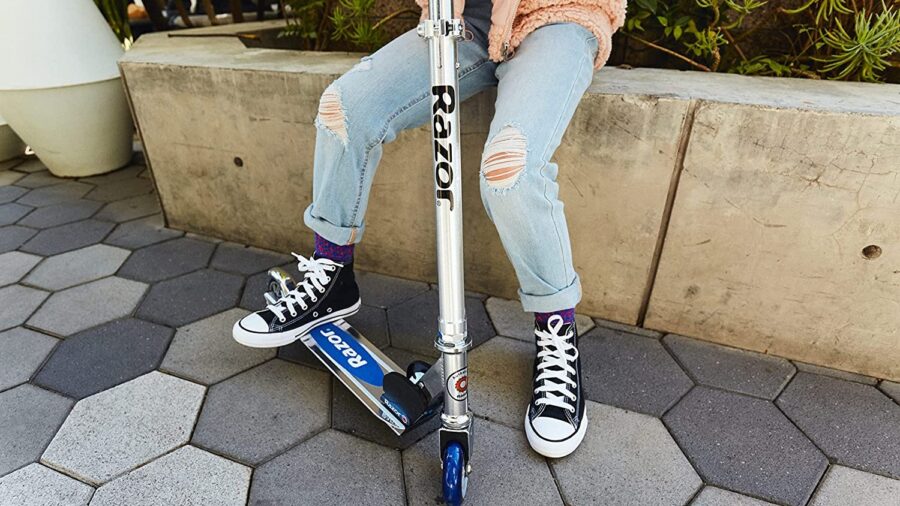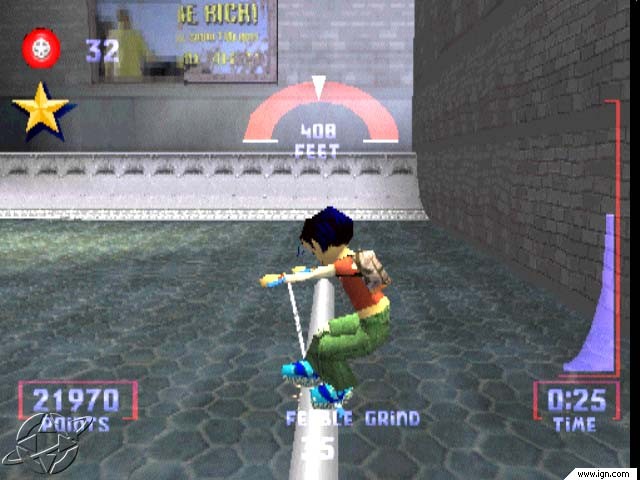Remember Razor Scooters? They Actually Had An Entire Video Game
Razor Freestyle Scooter was a popular game that fans of the popular two-wheeler might not know existed!

For anyone who grew up in the late 90s and early 2000s, the pop-colored Razor Scooters with small wheels were all the rage, so it’s no wonder they had an entire video game dedicated to them. Yes, that’s right, those who owned a fifth-generation, or certain sixth-generation console, could enjoy performing tricks and stunts in a virtual world just the same as they did that afternoon at the mall. Great toys and video games always went hand in hand—just look at Teenage Mutant Ninja Turtles and Transformers—and 2000’s Razor Freestyle Scooter is a good example of that.

Razor Freestyle Scooter was released in 2000 in North America by Crave Entertainment as a game licensed by RazorUSA, which was the company that made the now-iconic mode of transportation for early-2000 adolescents. It allowed players to take control of their favorite Razor Scooter rider and perform tricks and stunts in various locations around the world. The game’s reception was average or mixed depending on who you asked, but scooter-loving teens most certainly loved the game that now, from the viewpoint of someone growing up in the early 90s, was a unique release.
The Razor Scooter game was everything you could imagine from such a release. It featured a variety of gaming modes, including Freestyle, Time Attack, and Party Play. As you might imagine, the Freestyle mode was just that, a mode in which gamers could explore different levels and perform different tricks to score points. Do you remember points, those numbers that add up to a high score?
For those who haven’t encountered high scores, we’re discussing predecessors to modern leaderboards, but instead of being displayed online, they were displayed on the game cabinets at the arcades—things modern gamers call retro games.
Back to the topic at hand, Time Attack challenged gamers to complete a series of objectives within a set time limit, and Party Play is pretty self-explanatory—the idea of a multiplayer game back then was a split-screen session with four controllers plugged into a single console. The game was really appealing to Razor Scooter-lovers, as it put the most emphasis on real-life Razor Scooter tricks, allowing players to perform classics such as Tail Whip, Bar Spin, Bri Flip, and Flair. Of course, each trick had its own difficulty and was worth a certain amount of points that would add to the high score.
Everything about this game was great: the game itself, the selection of Razor Scooter riders, and the soundtrack—the soundtrack was fantastic. Where it failed was in its direct approach. We can’t say this with absolute certainty, but it would seem that the publisher specifically targeted systems that were dominant in the US market, which includes Nintendo 64, the original PlayStation, and the Sega Dreamcast.
All of these were massively popular in the US, as was the Dreamcast—which was actually a short-lived sixth-gen console.
The razor scooter game launched at the sunset of the fifth generation, and its only release on the sixth gen was on Dreamcast, which was pulled from production in 2001. It couldn’t really compare with the sixth-gen games and was ultimately overshadowed by other extreme sports games, such as Tony Hawk’s Pro Skater and Dave Mirra Freestyle BMX. Perhaps it would’ve fared better if it was released on PlayStation 2.
Nonetheless, for those who grew up playing it, it still remains as a nostalgic reminder of simpler times, scratched knees and elbows, and bruised shins—unless you were THAT kid whose mom made them wear protective gear.












